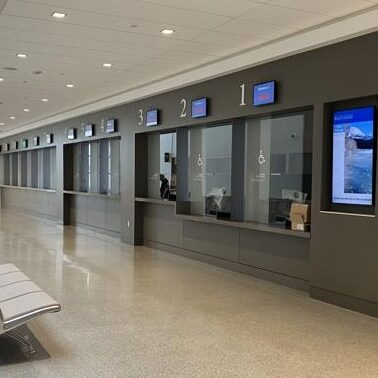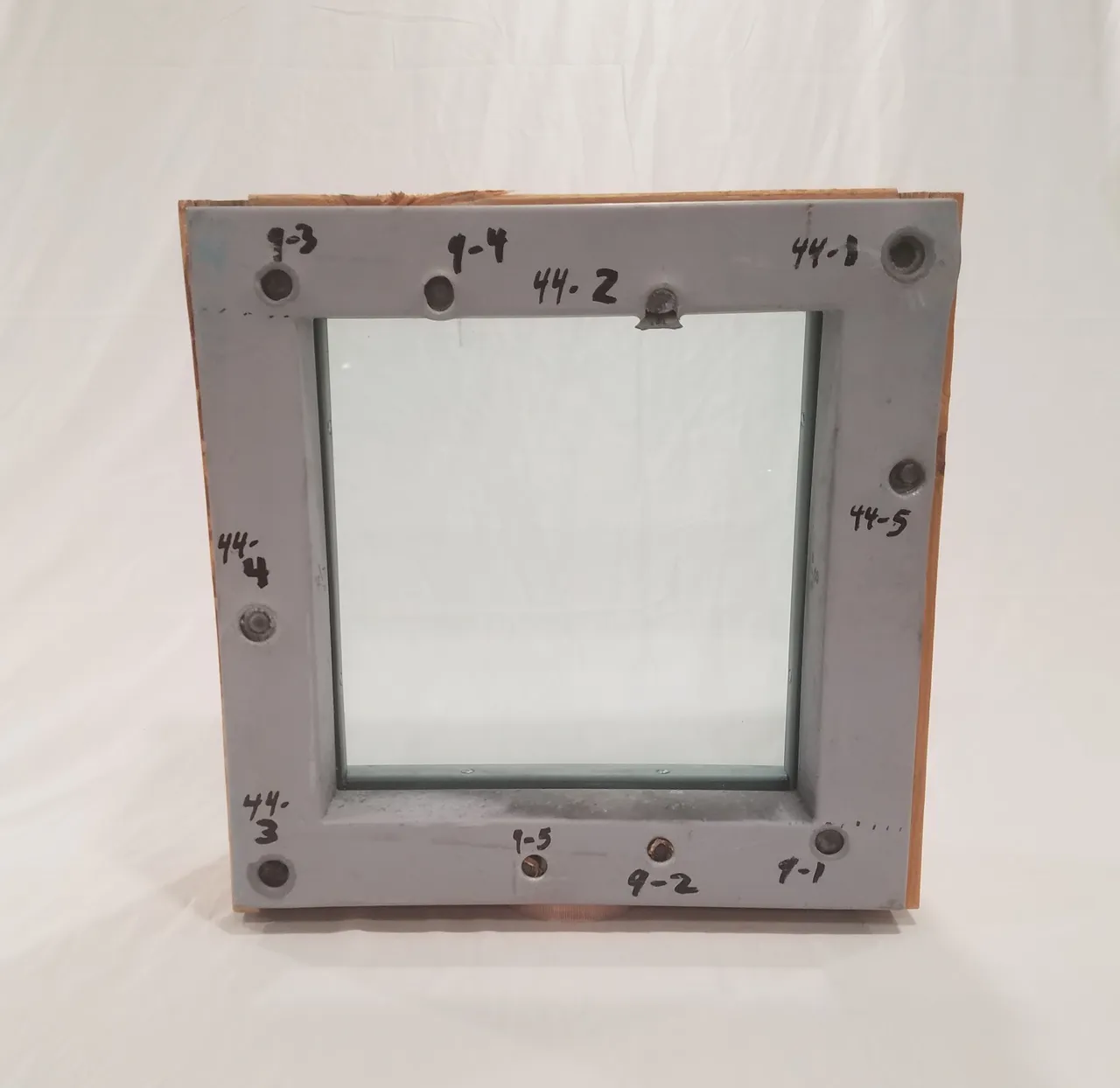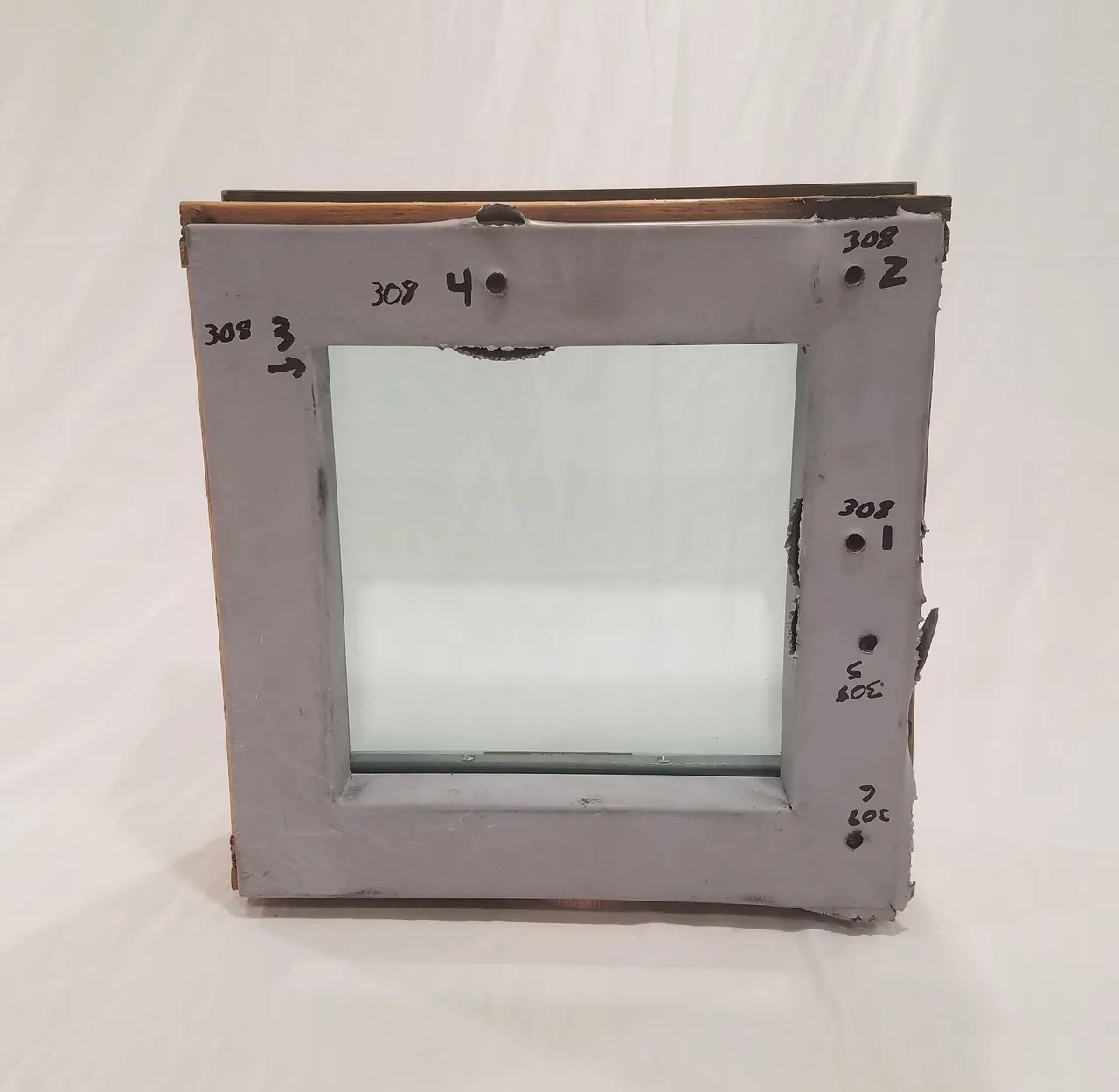
Our window frames are adjustable to fit from 4-1/4″ to 8″ thick walls.
The order size is the actual glass size.
Your rough opening size will be 1″ over the order size (ex: 24″ x 24″ will have a 25″ x 25″ rough opening).
Your visible glass size will be approx 1-1/4″ under order size (ex: 24″ x 24″ will have a 22-3/4″ x 22-3/4″ visible glass size).
Our UL 752 Level 3 bullet resistant glass and frames are tested to stop handgun threats up to .44 Magnum.
We provide bullet resistant glass and frames for your project-specific requirements. Select from standard sizes or request a quote for custom sizes, quantities, and bullet resistant levels. The typical lead time is 3 to 4 weeks.
This is a laminated product and is considered impact resistant safety glass. This glass meets ANSI Z97.1 and CPSC 16 CFR Part 1201 CAT I & II.
Click the quote request button below, we respond in 1 day
Our UL 752 Level 8 bullet resistant glass and frames are tested to stop rifle threats up to .308 Wincheter and 7.62×51.
We provide bullet resistant glass and frames for your project-specific requirements. Select from standard sizes or request a quote for custom sizes, quantities, and bullet resistant levels. The typical lead time is 3 to 4 weeks.
This is a laminated product and is considered impact resistant safety glass. This glass meets ANSI Z97.1 and CPSC 16 CFR Part 1201 CAT I & II.
Click the quote request button below, we respond in 1 day
Protect Your Property with Liberty Shielding’s Bullet Windows
At Liberty Shielding, we specialize in manufacturing bullet-resistant windows that offer superior protection against a variety of threats. Whether you’re securing a government building, school, bank, or other high-risk facility, our bullet windows are built to keep people safe.
Our windows are made with advanced materials designed to withstand bullets and other types of impact. Available in different levels of protection, Liberty Shielding’s bullet-resistant windows provide a clear, reliable barrier without compromising the look and feel of your building.
If you’re looking for reliable, clear, and durable bullet-resistant windows, Liberty Shielding has you covered.👉 Call now or request a quote online — for Bullet-Resistant Windows!
Traditional glass can’t stop bullets, and even some walls may fail to protect. Bullet-resistant windows safeguard occupants in high-risk buildings like schools, banks, government facilities, and police stations.
They’re ideal for:
Convenience stores and financial institutions
Government buildings
Schools and universities
Police stations
Jewelry stores and banks
Museums and stadiums
Our windows provide discreet protection that looks like standard glass. They’re engineered to resist bullets while preserving the aesthetic of your building.
Level 3: Stops .44 Magnum rounds
Level 8: Resists high-velocity 7.62mm rifle rounds
Level 3: Stops .44 Magnum rounds
Level 8: Resists high-velocity 7.62mm rifle rounds
They’re made from laminated layers of glass and polycarbonate. When hit, the bullet’s energy is absorbed, the projectile is trapped inside, and the glass stays together to prevent injury.
No. They are designed to look just like regular windows—clean, clear, and professional—while offering maximum safety.
Yes. We offer bullet-resistant windows in various sizes, thicknesses, and levels of protection to meet your specific building and security needs.
Protection from bullets and glass shards
Clear, discreet appearance
Long-term durability
Custom-built to fit your project
There’s much to see here. So, take your time, look around, and learn all there is to know about us. We hope you enjoy our site and take a moment to drop us a line.

Level 3 Frame after test. 5 shots of 9mm and 5 shots of .44 Magnum

Level 8 Frame after test. 5 shots of .308 Winchester

UL 752 consist of 11 levels of ballistic resistance based around firearm calibers ranging from 9mm handgun up to .50 caliber rifle. The caliber and number of shots the products resists (1, 3, or 5 shots) defines the UL level of the product. For example, Level 3 resists a minimum of 3 shots of .44 Magnum and Level 8 resists at least 5 shots of .308 Winchester (7.62mm x 51)
